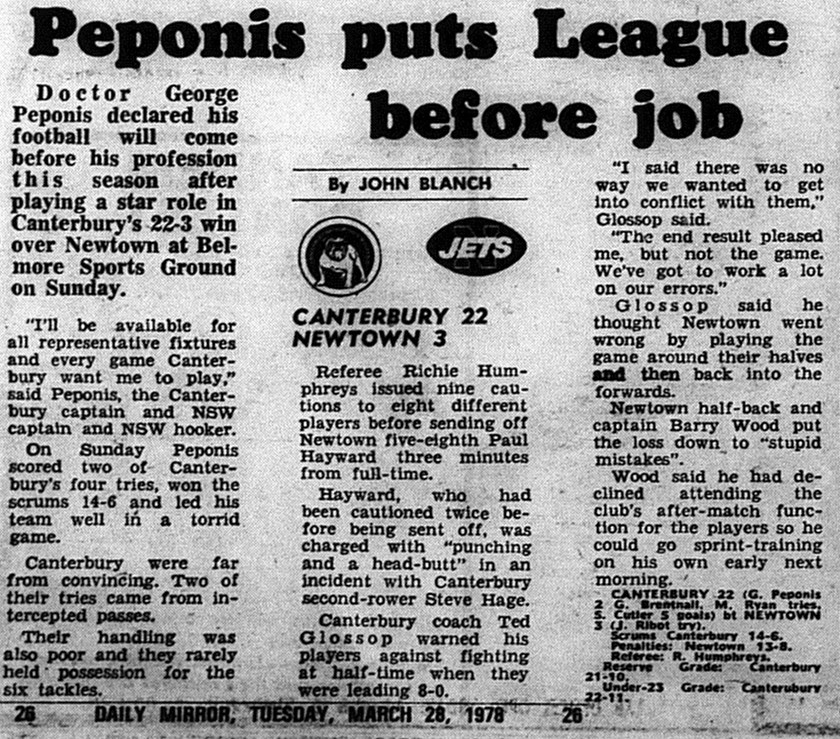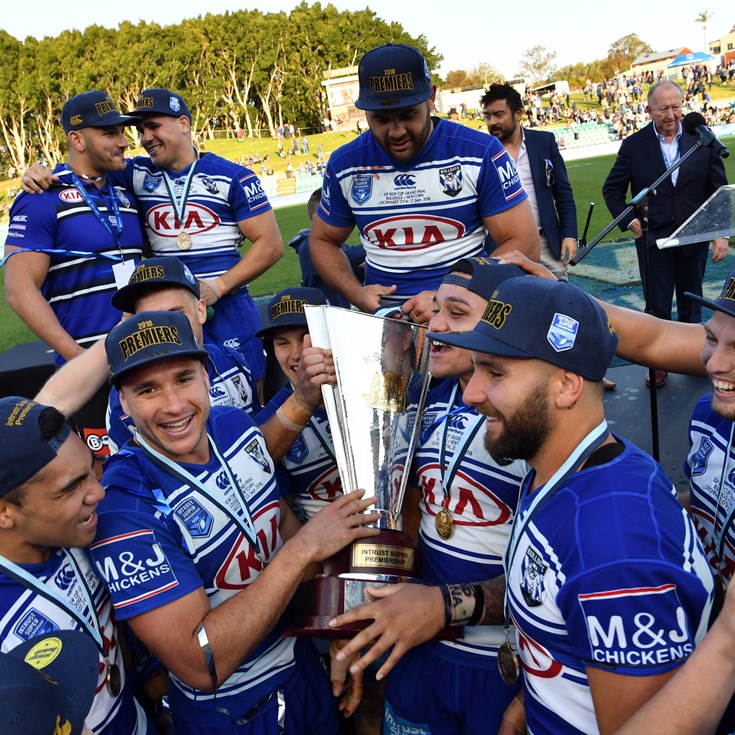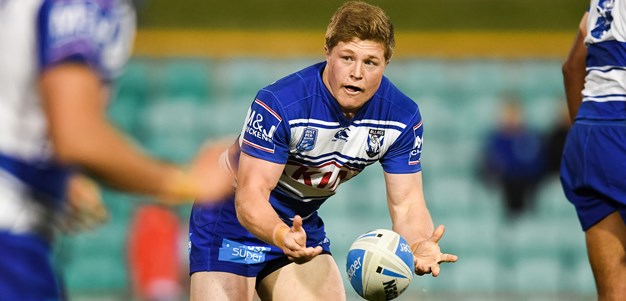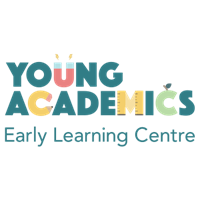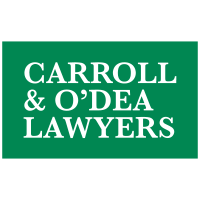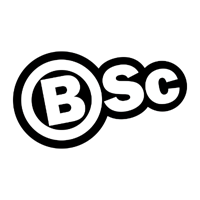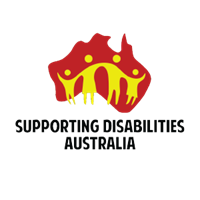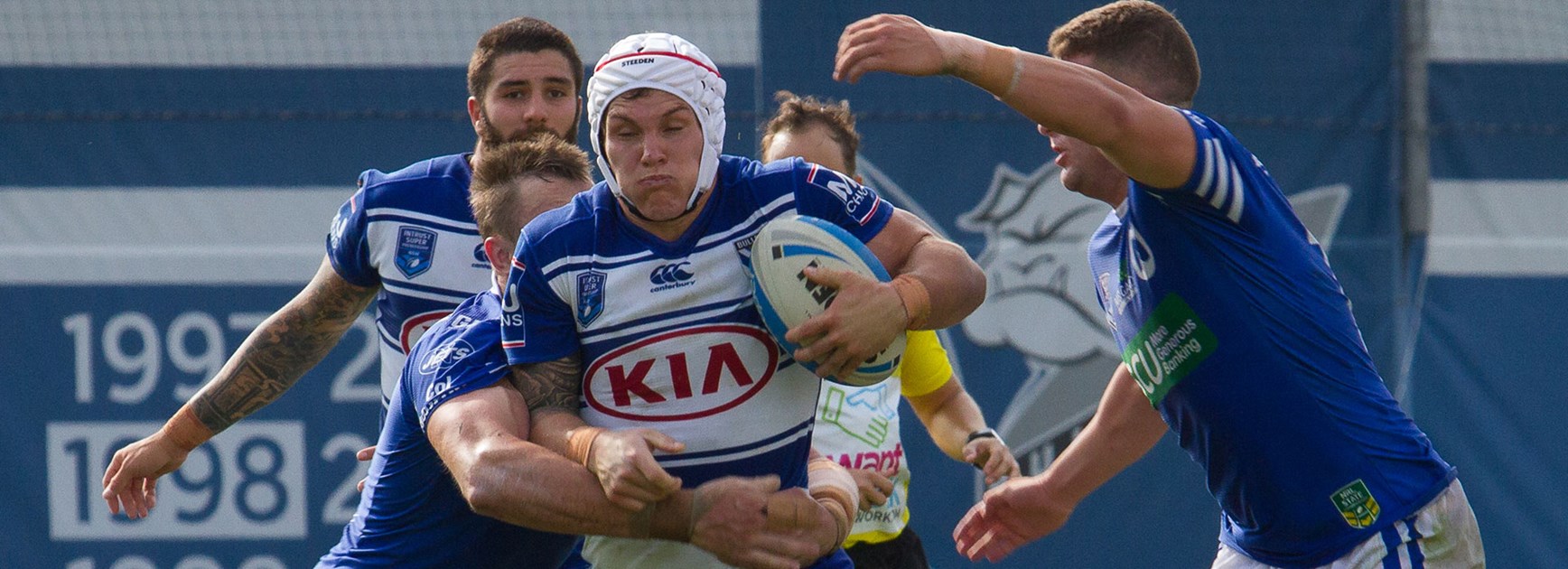
The Canterbury-Bankstown Bulldogs will this week meet the Newtown Jets in the Intrust Super Premiership Grand Final.
The Bulldogs were admitted to the New South Wales Rugby League competition in 1935 and won their first premiership in just their fourth season (1938), while the Newtown Rugby League Football Club was formed on January 8, 1908 and their first Premiership in the NSW Rugby League was in 1910.
Canterbury have won eight first grade competitions and 11 reserve grade titles, while Newton have claimed three first grade premierships and seven reserve grade grand final victories.
The Bulldogs last claimed the reserve grade premiership in 2011, while the Jets were victorious in 2012.
There have been some great memories between the two clubs over the years, including the five listed below.
1. Round 10, 1942:
Canterbury forward Eddie Burns playing in his 105th first grade game, broke the Belmore Oval record for a forward when he scored four tries against the Newtown Jets to lead his team to victory.
Canterbury led 17-nil at the break and although Burns had only slept for three hours in the 24 hours prior to the match, he played a starring role with two of his tries coming late in the game.
Canterbury 28 defeated Newtown 5
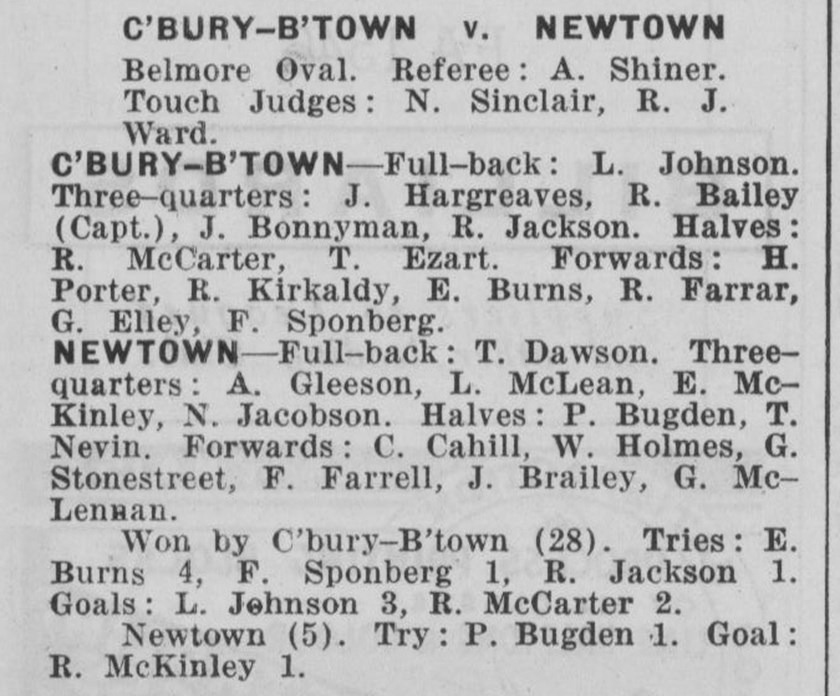
2. Nil all draw:
Canterbury and Newton made history on Sunday, March 28th, 1982 when they battled out a nil-all draw in the fifth round of the season at Henson Park.
The result is the only nil-all draw to be played in the premiership dating back to 1908, although the third test between Australia and England in 1930 was scoreless.
The match was riddled with mistakes due to the wet weather, both teams missed field goal opportunities, missed their one penalty goal attempt and Newtown had a try disallowed due to a forward pass.
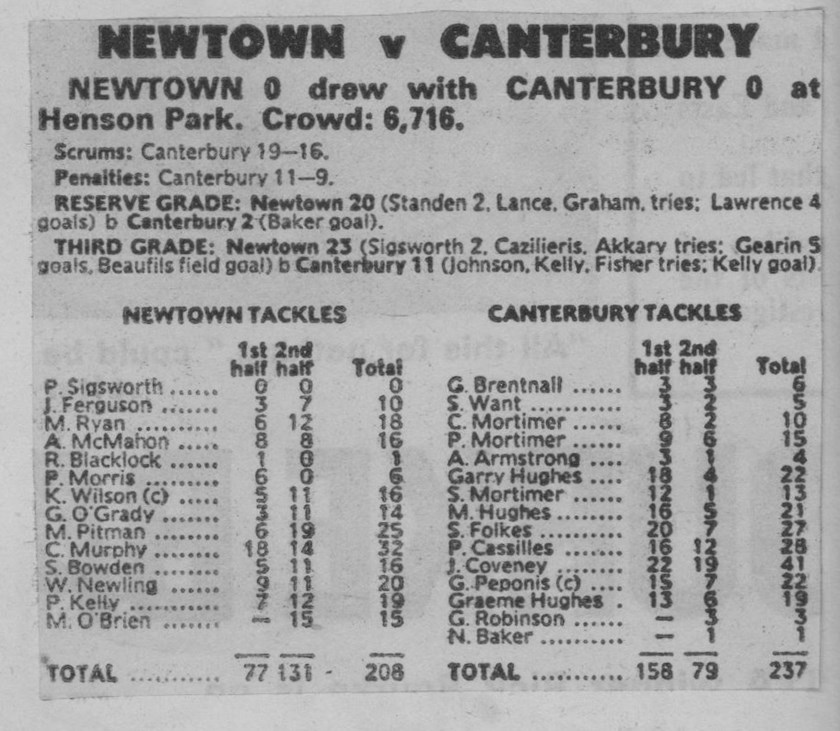
3. Biggest winning margin:
Canterbury's biggest ever win over the Jets came in 1979 when they defeated Newtown 38-6 at Belmore Sports Ground.
The Bulldogs lost halfback Steve Mortimer with a hamstring injury just before halftime and the player who stole the limelight was Mortimer's replacement, Mal Creevey who scored three tries in only his second first grade appearance.
Winger Steve Gearin scored two tries and kicked seven goals for a total of 20 points.
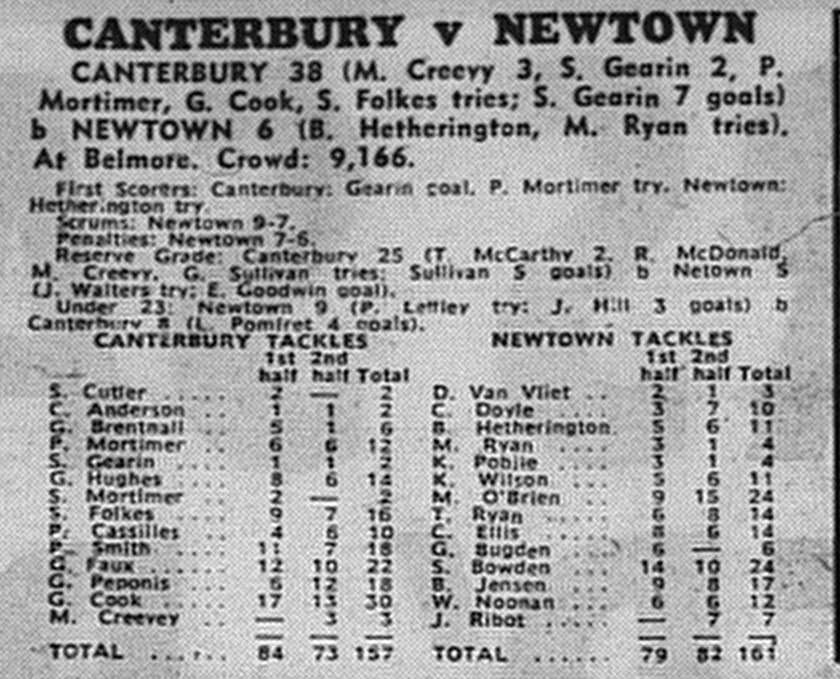
4. Henson Park Madness:
The opening match of the 1980 season between Canterbury and Newtown resulted in two Jets players being sent from the field, Bill Noonan and Michael Pitman.
Noonan was given his marching orders by referee Kevin Roberts in the 7th minute because of a head-high tackle, while Pitman was marched 12 minutes later for using an elbow to the head of Canterbury halfback Steve Mortimer.
Although the jets were down two men, they did lead 7-3 at the break, but the inclusion of Mal Creevey for Canterbury and the loss of Newton fullback Phil Sigsworth saw the momentum turn in favour of the Dogs.
The Bulldogs scored five tries within the first 20 minutes of the second half and walked away from Henson Park with a hard fought 38-17 win.
Creevey, who replaced Mortimer, finished with a hat-trick of tries and fullback Stan Cutler had a day out with two tries and seven goals for a total of 20 points.
5. First victory as "The Bulldogs"
In 1978 Canterbury became known as the Bulldogs and the opening game of the season was against the Newtown Jets.
Canterbury claimed a 22-3 victory over the Jets at Belmore Sports Ground thanks to an inspiring performance from captain and hooker Doctor George Peponis.
Peponis scored two of Canterbury's four tries, including a 35 yard effort after he scooped up a loose ball to run away and score.
Winger Mick Ryan and fullback Greg Brentnall were the Bulldogs other try scorers, while Stan Cutler kicked five goals from six attempts.
